Abstract
Growth of Trypanosoma musculi in vitro has been achieved. The number of parasites increased by more than 1,500-fold in less than 8 days under the most suitable conditions. The rate and magnitude of growth was comparable to that which occurs in inoculated murine hosts. Maximum growth was displayed in cultures composed of RPMI 1640 medium supplemented with fetal calf serum, murine spleen cells, and foreign erythrocytes (sheep). No growth occurred in the absence of spleen cells. The adherent, macrophage-rich population supported parasite growth much better than did the nonadherent population. Parasite growth was excellent in the presence of irradiated spleen cells or of cells from thymectomized, irradiated, bone marrow-reconstituted mice. The important cells appeared to be macrophages. The beneficial effect of sheep erythrocytes probably resulted from preoccupation or stimulation of phagocytes. Soluble substances released by spleen cell cultures promote parasite growth, as was shown by experiments with double-compartment culture vessels. The utility of this culture system for analysis of host immune responses against the trypanosome was demonstrated.
Full text
PDF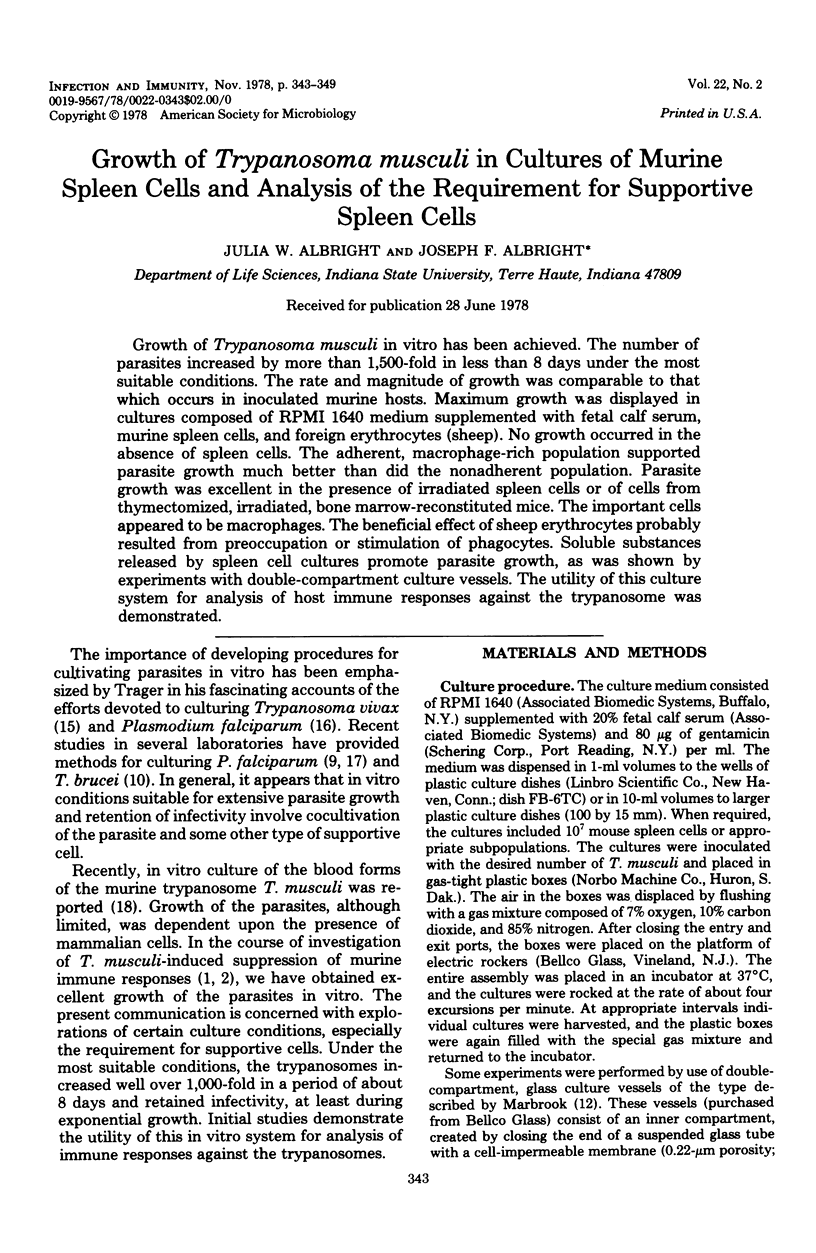
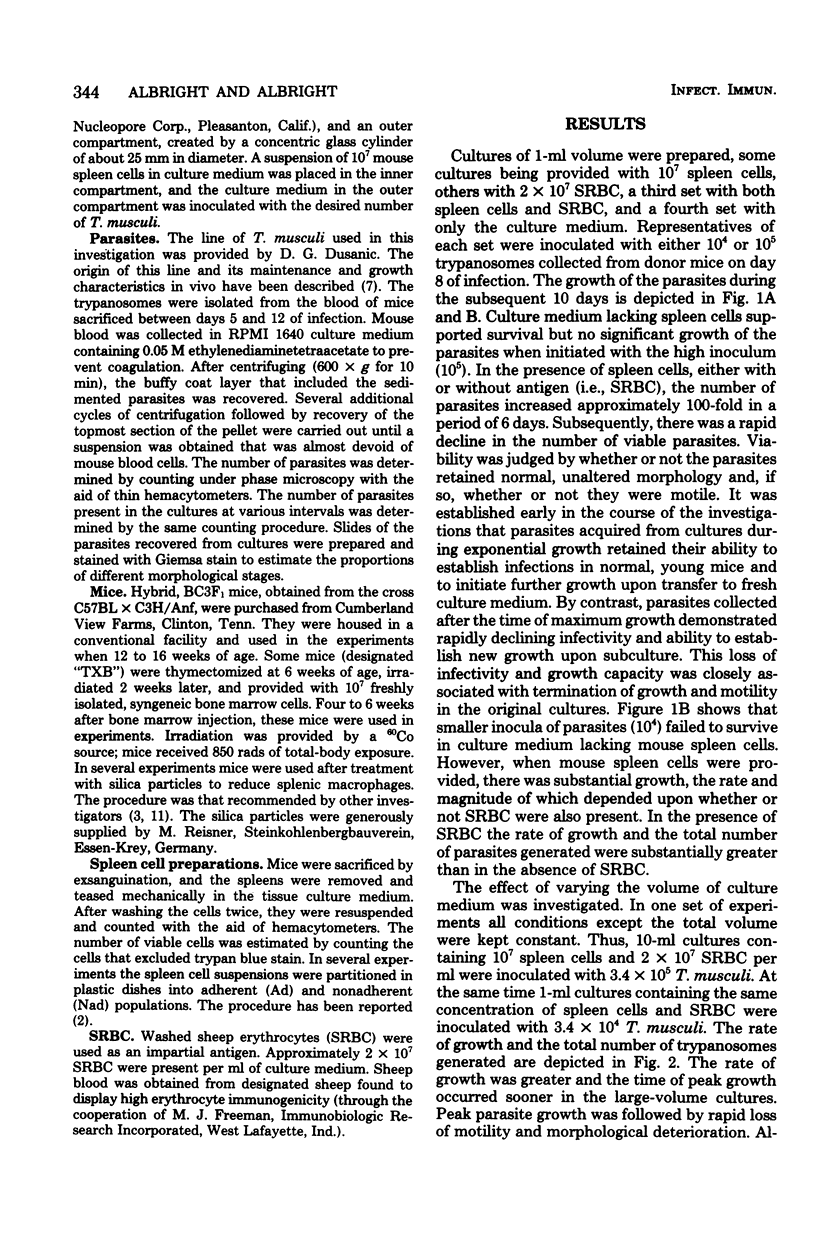
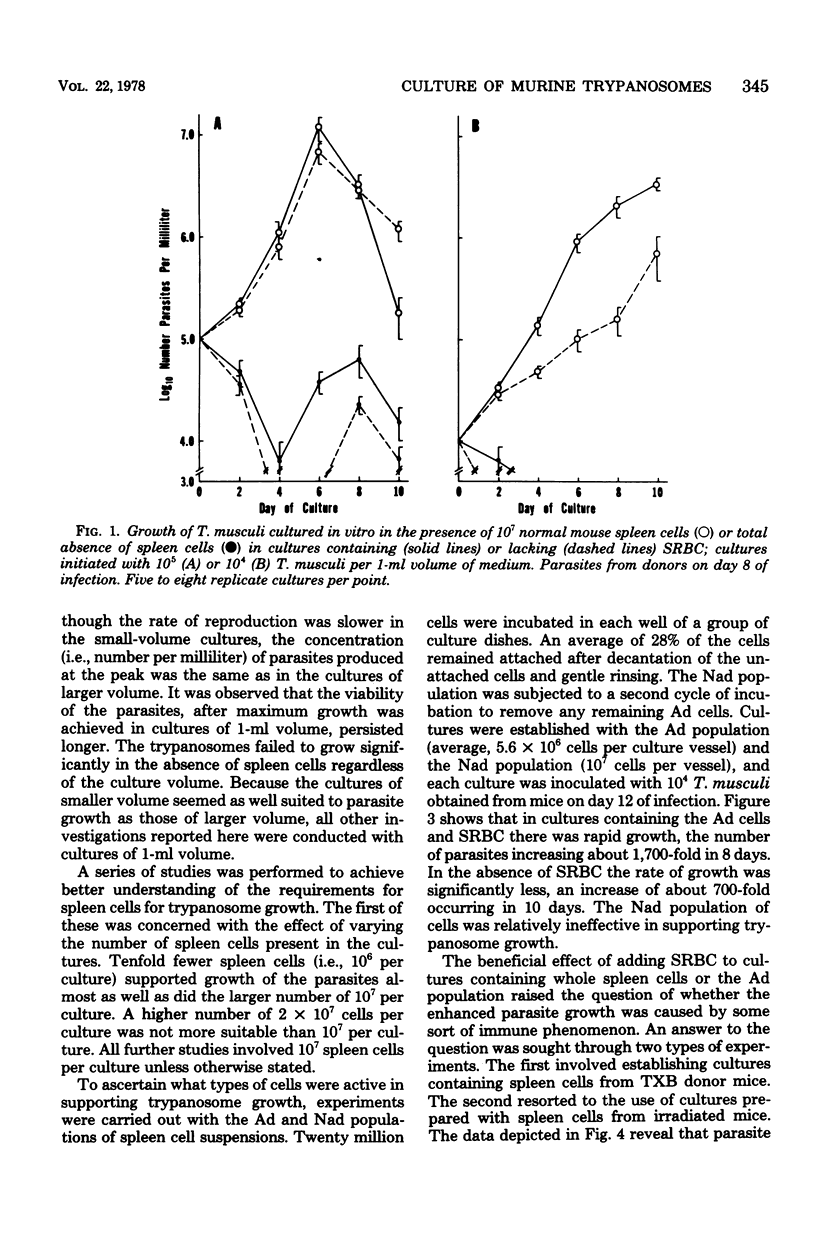
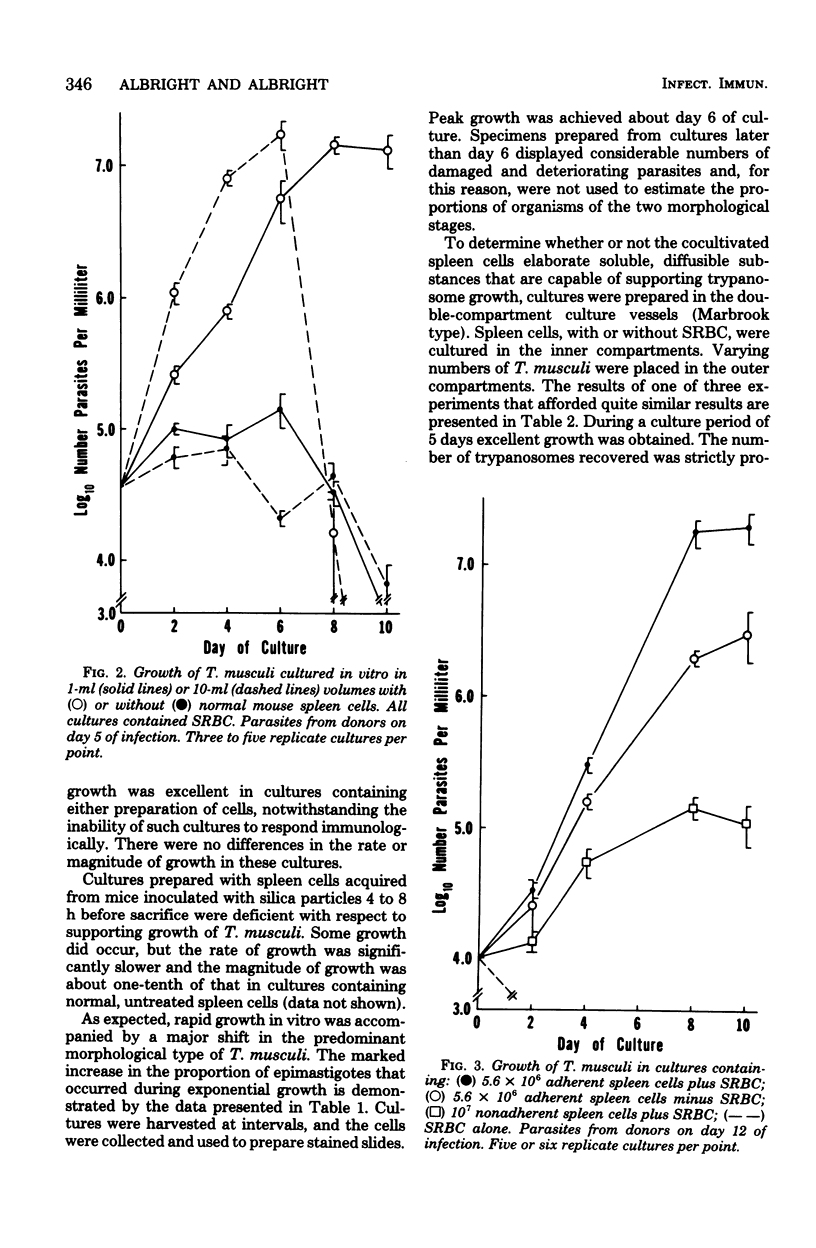
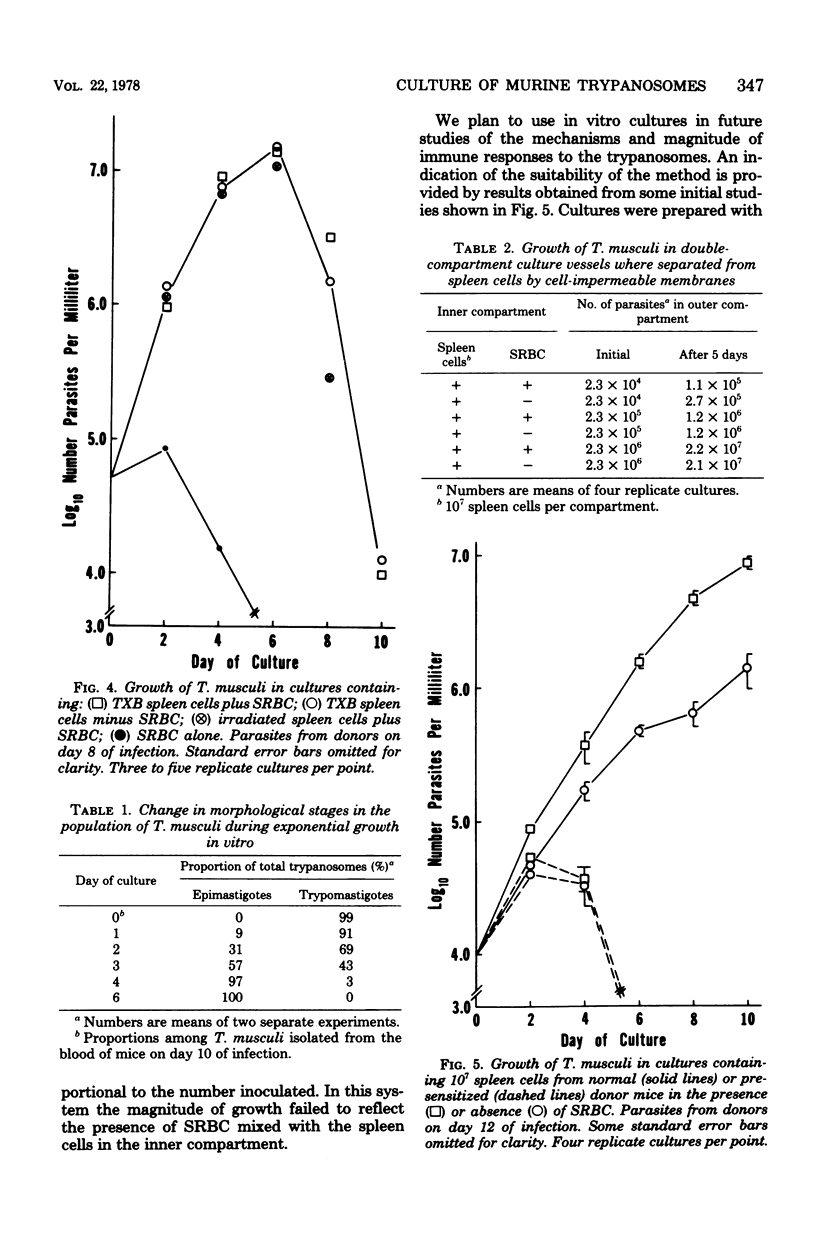
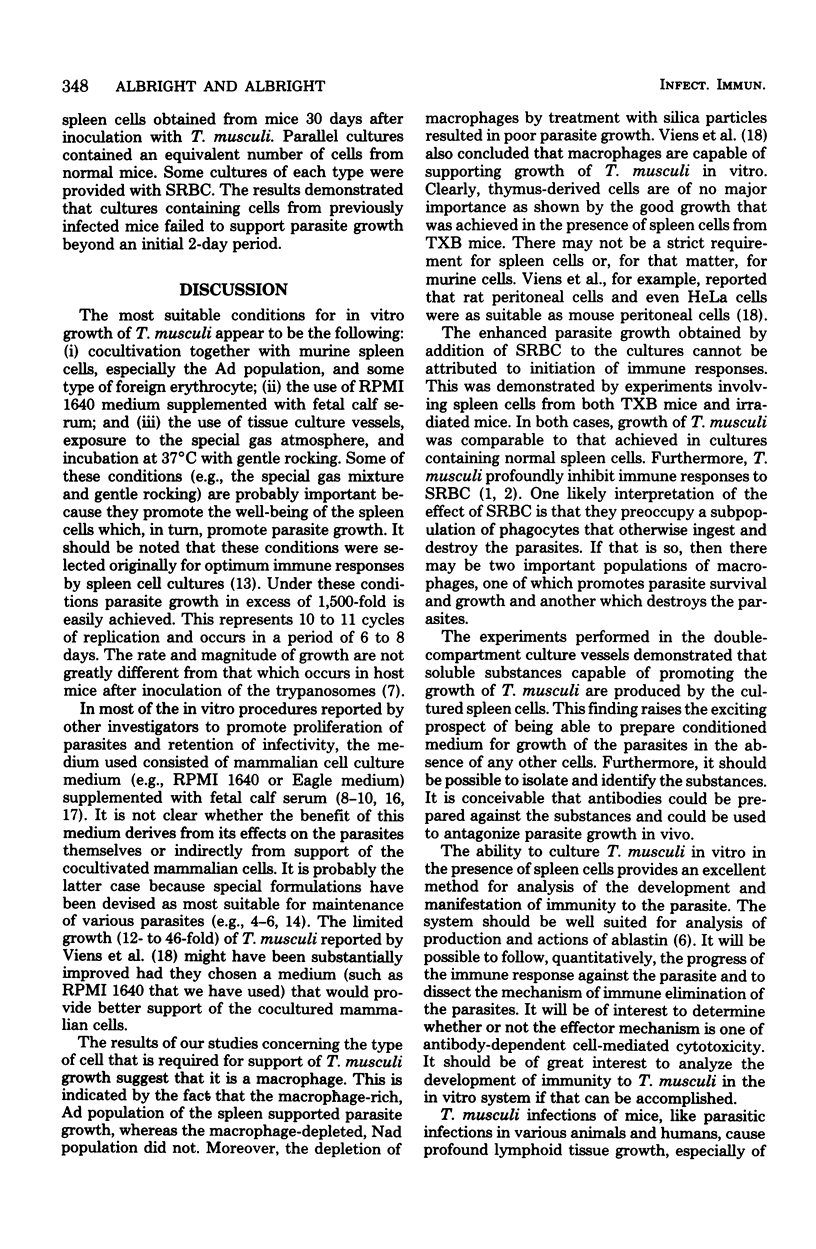

Selected References
These references are in PubMed. This may not be the complete list of references from this article.
- Albright J. F., Albright J. W., Dusanic D. G. Trypanosome-induced splenomegaly and suppression of mouse spleen cell responses to antigen and mitogens. J Reticuloendothel Soc. 1977 Jan;21(1):21–31. [PubMed] [Google Scholar]
- Albright J. W., Albright J. F., Dusanic D. G. Mechanisms of trypanosome-mediated suppression of humoral immunity in mice. Proc Natl Acad Sci U S A. 1978 Aug;75(8):3923–3927. doi: 10.1073/pnas.75.8.3923. [DOI] [PMC free article] [PubMed] [Google Scholar]
- Allison A. C., Harington J. S., Birbeck M. An examination of the cytotoxic effects of silica on macrophages. J Exp Med. 1966 Aug 1;124(2):141–154. doi: 10.1084/jem.124.2.141. [DOI] [PMC free article] [PubMed] [Google Scholar]
- Anderson S. J., Krassner S. M. Axenic culture of Trypanosoma cruzi in a chemically defined medium. J Parasitol. 1975 Feb;61(1):144–145. [PubMed] [Google Scholar]
- Cross G. A., Manning J. C. Cultivation of Trypanosoma brucei sspp. in semi-defined and defined media. Parasitology. 1973 Dec;67(3):315–331. doi: 10.1017/s0031182000046540. [DOI] [PubMed] [Google Scholar]
- D'ALESANDRO P. A. In vitro studies of ablastin, the reproduction-inhibiting antibody to Trypanosoma lewisi. J Protozool. 1962 Aug;9:351–358. doi: 10.1111/j.1550-7408.1962.tb02633.x. [DOI] [PubMed] [Google Scholar]
- Dusanic D. G. Trypanosoma musculi infections in complement-deficient mice. Exp Parasitol. 1975 Apr;37(2):205–210. doi: 10.1016/0014-4894(75)90071-5. [DOI] [PubMed] [Google Scholar]
- Haynes J. D., Diggs C. L., Hines F. A., Desjardins R. E. Culture of human malaria parasites Plasmodium falciparum. Nature. 1976 Oct 28;263(5580):767–769. doi: 10.1038/263767a0. [DOI] [PubMed] [Google Scholar]
- Hirumi H., Doyle J. J., Hirumi K. African trypanosomes: cultivation of animal-infective Trypanosoma brucei in vitro. Science. 1977 May 27;196(4293):992–994. doi: 10.1126/science.558652. [DOI] [PubMed] [Google Scholar]
- Lotzová E., Cudkowicz G. Abrogation of resistance to bone marrow grafts by silica particles. Prevention of the silica effect by the macrophage stabilizer poly-2-vinylpyridine N-oxide. J Immunol. 1974 Sep;113(3):798–803. [PubMed] [Google Scholar]
- Marbrook J. Primary immune response in cultures of spleen cells. Lancet. 1967 Dec 16;2(7529):1279–1281. doi: 10.1016/s0140-6736(67)90393-5. [DOI] [PubMed] [Google Scholar]
- Mishell R. I., Dutton R. W. Immunization of dissociated spleen cell cultures from normal mice. J Exp Med. 1967 Sep 1;126(3):423–442. doi: 10.1084/jem.126.3.423. [DOI] [PMC free article] [PubMed] [Google Scholar]
- Steiger R. F., Steiger E. A defined medium for cultivating Leishmania donovani and L. braziliensis. J Parasitol. 1976 Dec;62(6):1010–1011. [PubMed] [Google Scholar]
- Trager W. Cultivation of parasites in vitro. Am J Trop Med Hyg. 1978 Mar;27(2 Pt 1):216–222. doi: 10.4269/ajtmh.1978.27.216. [DOI] [PubMed] [Google Scholar]
- Trager W., Jensen J. B. Human malaria parasites in continuous culture. Science. 1976 Aug 20;193(4254):673–675. doi: 10.1126/science.781840. [DOI] [PubMed] [Google Scholar]
- Trager W. On the cultivation of Trypanosoma vivax: a tale of two visits in Nigeria. J Parasitol. 1975 Feb;61(1):3–11. [PubMed] [Google Scholar]
- Viens P., Lajeunesse M. C., Richards R., Targett G. A. Trypanosoma musculi: in vitro cultivation of blood forms in cell culture media. Int J Parasitol. 1977 Apr;7(2):109–111. doi: 10.1016/0020-7519(77)90075-3. [DOI] [PubMed] [Google Scholar]


